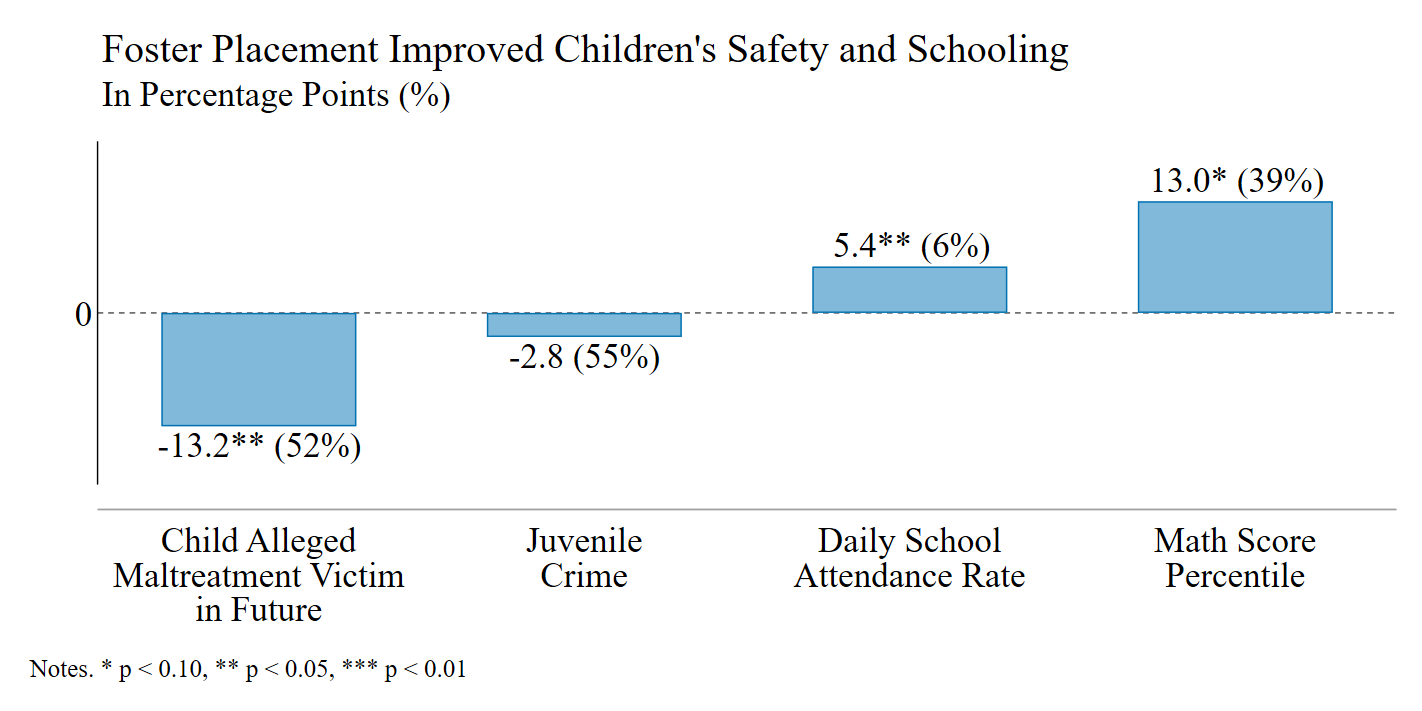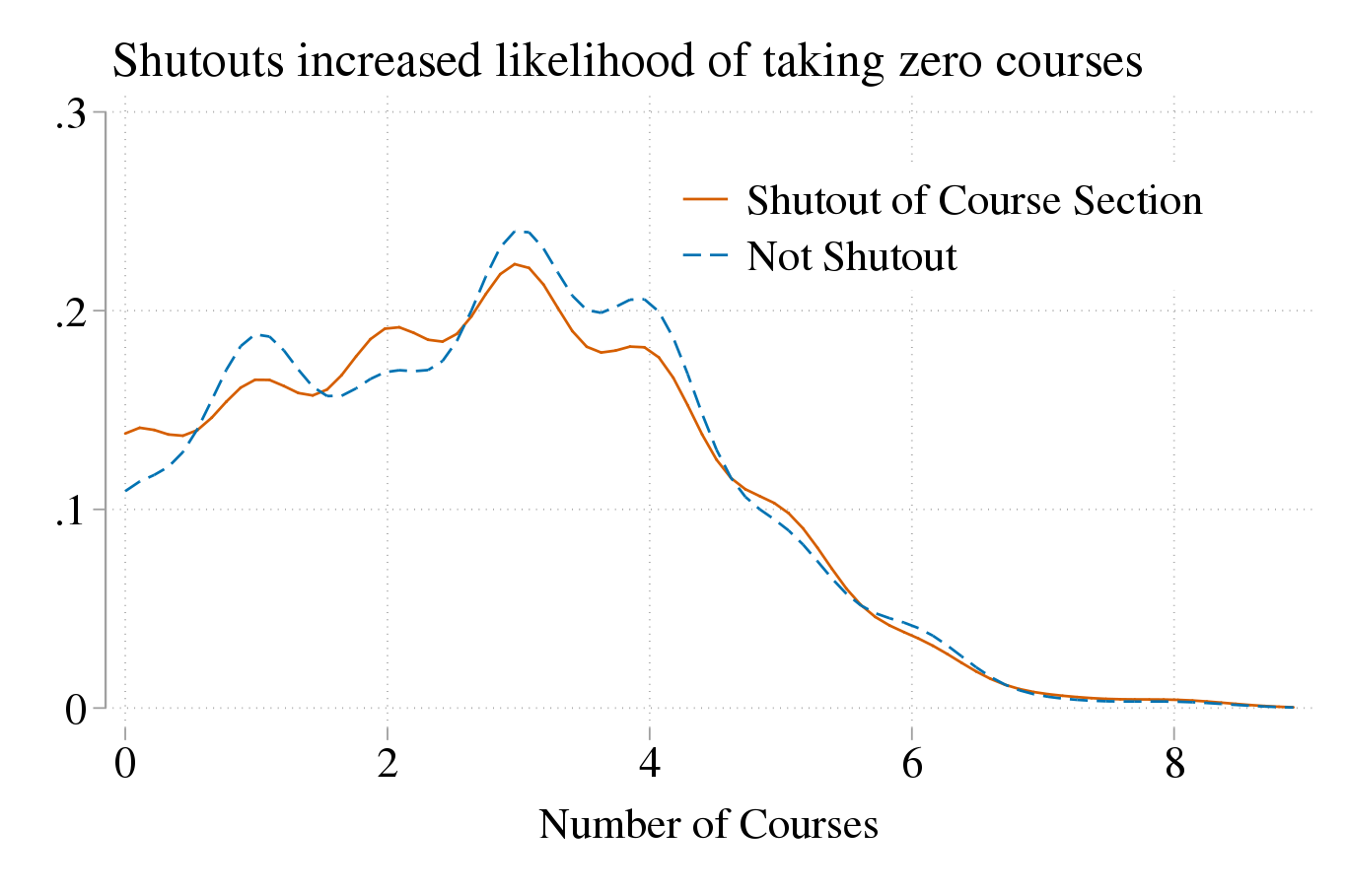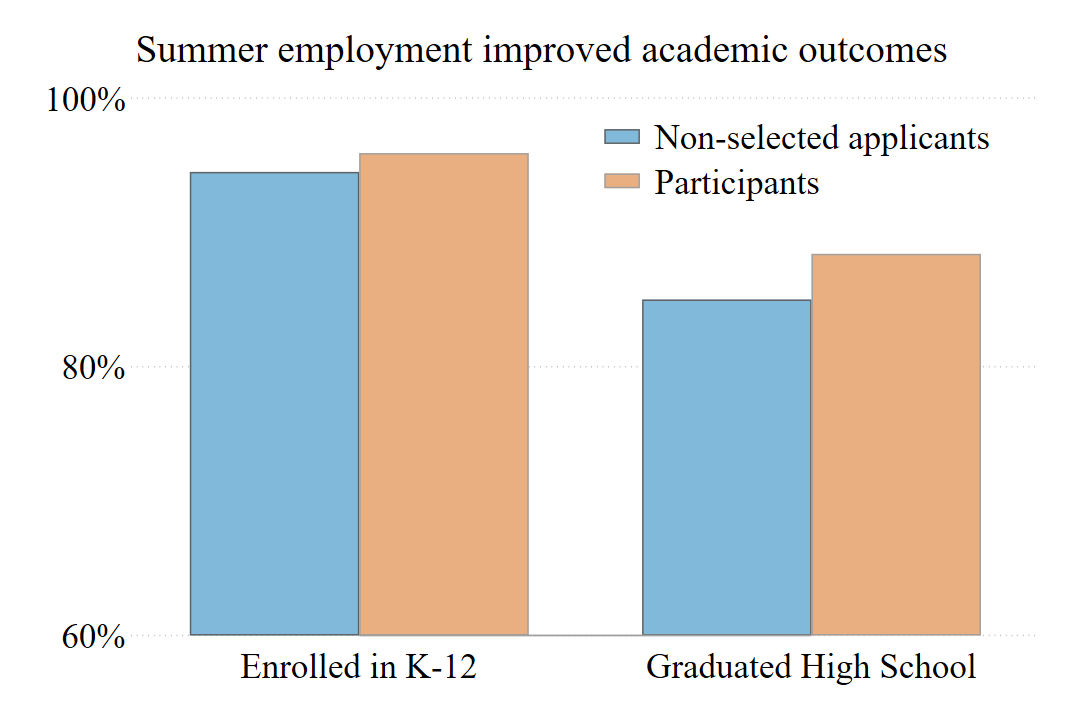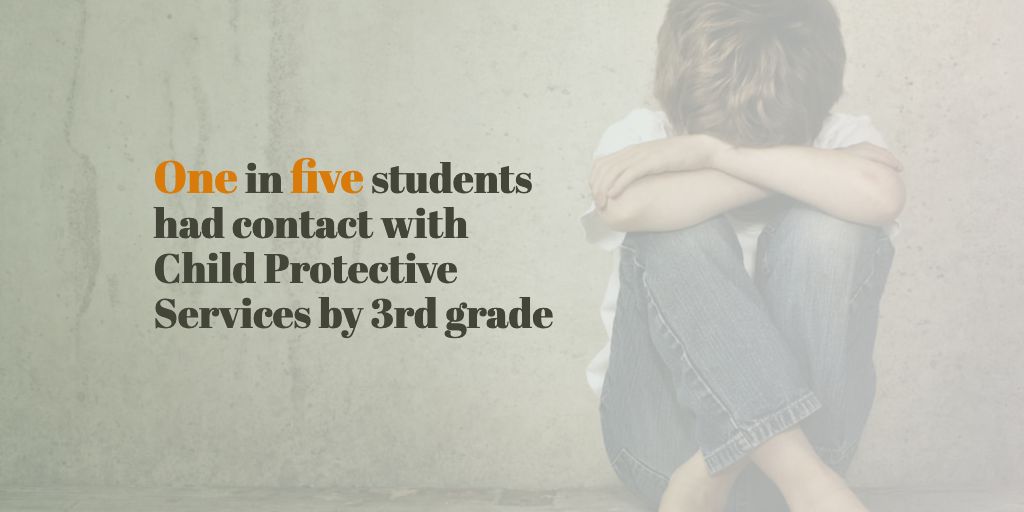Job Market Paper
Temporary Stays and Persistent Gains: The Causal Effects of Foster Care
Abstract
6% of children in the United States enter the foster system between birth and age eighteen. Using administrative data from Michigan, I estimate the effects of foster care on children's outcomes by exploiting the quasi-random assignment of child welfare investigators. I find that foster care reduced the likelihood of being abused or neglected in the future by 50%, increased daily school attendance by 6%, and improved math test scores by 0.34 standard deviations. Gains in safety and academics emerged after children exited the system when most were reunified with their birth parents, suggesting that improvements made by birth parents was an important mechanism. I discuss implications for policy in light of the Family First Prevention Services Act of 2019, which allocates billions of federal dollars toward reducing foster placements.
Working Papers
The Effect of Course Shutouts on Community College Students: Evidence from Waitlist Cutoffs (with Silvia Robles and Robert W. Fairlie). NBER Working Paper #26376.
Abstract
One frequently cited yet understudied channel through which money matters for college students is course availability--colleges may respond to budgetary pressure by reducing course offerings. Open admissions policies, binding class size constraints, and heavy reliance on state funding may make this channel especially salient at community colleges, which enroll 47% of U.S. undergraduates in public colleges and 55% of underrepresented minority students. We use administrative course registration data from a large community college in California to test this mechanism. By exploiting discontinuities in course admissions created by waitlists, we find that students stuck on a waitlist and shut out of a course section were 25% more likely to take zero courses that term relative to a baseline of 10%. Shutouts also increased transfer rates to nearby, but potentially lower quality, two-year colleges. These results document that course availability--even through a relatively small friction--can interrupt and distort community college students' educational trajectories.
The Effect of Summer Employment on the Educational Attainment of Under-Resourced Youth (with Brian A. Jacob and Kelly Lovett).
Abstract
Summer youth employment programs are a popular way for municipalities to provide adolescents with skills and experiences thought to improve labor market outcomes. While research evidence on such programs has grown in recent years, it is still limited. In particular, it is not clear how, if at all, participation influences key educational outcomes. We study the program in Detroit, Michigan using a selection on observables identification strategy. In addition to controlling for a rich set of covariates, including baseline educational measures, we match participants to their classmates of the same race and gender who applied for the program, but did not participate. We find that participation is associated with a modest increase in educational attainment. Specifically, it increased the likelihood of enrolling in public school after the program by 1.5% and of graduating high school by 4%, relative to comparison means of 94.5% and 85%. Youth with the weakest academic skills benefited the most, as participation increased school enrollment by 2.2% and high school graduation by 5.5% for this group. Falsification tests of whether participation predicts pre-program characteristics as well as bounding exercises to account for omitted variables offer support that our results represent true effects of the program and not selection.- Public Policy Brief
- Press Coverage: CBS Detroit, Crain’s Detroit Business, Michigan Radio NPR

Peer-Reviewed Publications
Early Exposure to Child Maltreatment and Academic Outcomes (with Joseph P. Ryan, Brian A. Jacob, Andrew Moore, Brian E. Perron, and Sharlyn Ferguson).
Child Maltreatment 23(4), Nov 2018.
Abstract
We investigate the prevalence of early contact with child protection services (CPS) and determine whether early exposure to maltreatment investigations is associated with academic outcomes. Using administrative data from Michigan of over 700,000 children across seven birth cohorts, we find that 18% of students were the subject of a formal CPS investigation between birth and the third grade. In some school districts, more than 50% of third graders were the subject of an investigation. African American and poor students were more likely to be investigated for maltreatment than other groups. Children associated with maltreatment investigations scored significantly lower on standardized math and reading tests, were more likely to be identified as needing special education, and were more likely to be held back at least one grade. These findings indicate that involvement with CPS is not an infrequent event in the lives of young children and that within some school districts, maltreatment investigations are the norm. Child welfare and educational systems must collaborate so that the early academic struggles experienced by victims of maltreatment do not mature into more complicated difficulties later in life.